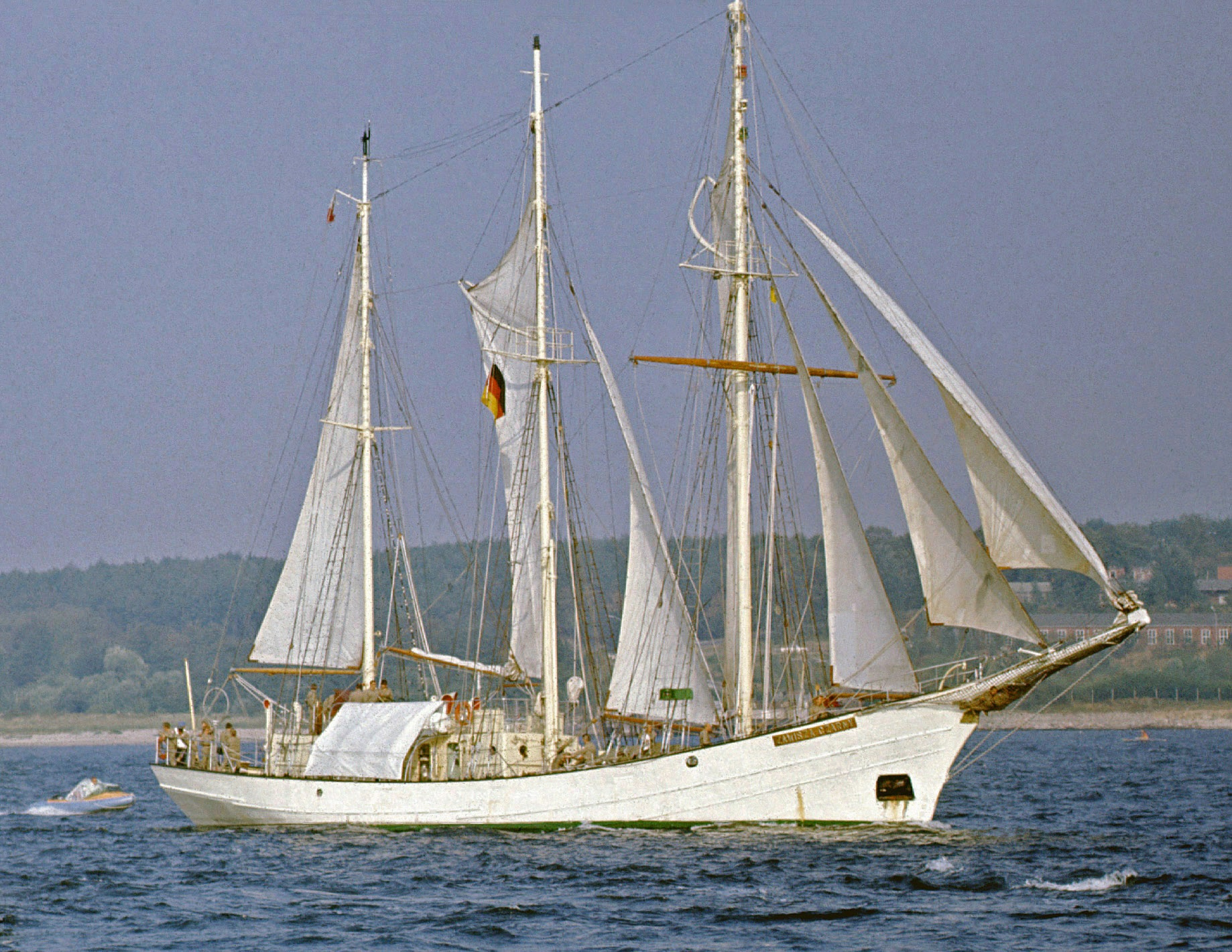
How Vasilefs Georgios Became Hermes
Vasilefs Georgios is now a German ZG 3. Noteworthy is the 20mm cannon on the bow and degaussing cables on the sides, which were installed by the new owners of the vessel.
The military history of one of the two destroyers built for the Greek "Polemiko Naftiko" in a British shipyard before World War II is interesting in that this ship - as one of the few - during the war carried the flags of the two countries, fighting on opposite sides during this world war. conflict.
Before the Second World War, representatives of the Greek fleet did the same as our admirals, who decided to build two modern destroyers in the UK. Thanks to this decision, Poland received two equally valuable, but larger and well-armed Grom-type units. The Greeks also placed an order for a pair of destroyers, but modeled after the British H and G types built for the Royal Navy.
The Greek counterparts were to be called Vasilyevs Georgios (in honor of the King of Greece George I, who ruled from 1863-1913) and Vasilisa Olga (the queen was his wife, she came from the royal family of the Romanovs). At the Greek shipyard Skaramagas near Athens or at Salamis, two more destroyers were later planned to be built, named Vasilefs Constantinos and Vasilissa Sofia, modeled on the first two (the order reportedly included 12 ships, 2 of which were launched).
The construction of Vasilefs Georgios was entrusted in 1936 to the Scottish shipyard Yarrow Shipbuilders Ltd (Scottstone). The destroyer in the future was to serve as the flagship of the Greek fleet, so the commander's premises on it were more comfortable than on other Greek ships (intended for the admiral in command of the fleet).
The ship was laid down in 1937, and the hull was launched on March 3, 1938. The ship was to begin service under the Greek flag on February 15, 1939. The vessel was assigned tactical number D 14 (Vasilisa Olga's twin was D 15, but the letter "D" is not drawn).
In some details, the Vasilefs Georgios clearly differed from the British prototypes, mainly in armament. The Greeks opted for the German 34 mm SKC/127 guns, which were mounted two at the bow and stern, similar to the anti-aircraft artillery. (the destroyer received 2 4-mm guns). The torpedo armament remained similar to the British G-class ships: Vasilefs Georgios had two quadruple 37 mm tubes. Fire control devices, by contrast, were ordered from the Netherlands.
The device with a displacement of 1414 tons and dimensions of 97 x 9,7 x 2,7 m had a crew of 150 people. The drive in the form of 2 steam boilers of the Yarrow system and 2 sets of Parsons turbines with a total capacity of 34 KM - made it possible to reach a maximum speed of 000-35 knots. The range of the destroyer did not differ significantly from the British ships on which it was modeled. This was 36 nautical miles at 6000 knots and 15 nautical miles at 4800 knots.
During the entire period of service under the Greek flag "Georgios" was commanded by commander Lappas (until April 23, 1941).
Destroyer service after the start of the war
The attack of Italian troops on Greece on October 28, 1940 forced the Polemiko Naftiko ships to cooperate with the forces of the Royal Navy. At the start of the Mediterranean War, Vasilefs Georgios and Vasilissa Olga raided the waters of the Strait of Otranto in an attempt to intercept Italian supply ships. One such attack was carried out on November 14-15, 1940, the other on January 4-5, 1941. The German attack on Greece changed the tasks of Georgios and Olga somewhat - now they escorted British supply convoys heading from Egypt. At a critical moment in the breakdown of the defense of the Greek-British forces in the Balkans, they also participated in the evacuation of troops and the Greek gold reserves to Crete.
The service of the destroyer under the Greek flag was to end violently in April 1941 due to the actions of German aviation. On the night of April 12-13 (according to some sources, April 14), Vasilefs Georgios was badly damaged in the Saronic Gulf during an attack by Junkers Ju 87 dive bombers. Another German raid found him there on 20 April 1941. Additional damage after the attack led to the fact that after 3 days the crew finally sank. The base at Salamis was occupied by the Germans on May 6, 1941. They immediately became interested in the Greek destroyer and decided to raise it and thoroughly repair it in order to take it into service with the Kriegsmarine.
Under the flag of the enemy
After the repair, on March 21, 1942, the Germans accepted the destroyer into service with the Kriegsmarine, assigning it the designation ZG 3. For obvious reasons, the unit was re-equipped, especially with an additional section. After repairs, 4 127-mm guns remained on the destroyer (fortunately for the Germans, the main caliber artillery did not have to be changed at all), 4 anti-aircraft guns. Caliber 37 mm, plus 5 anti-aircraft guns caliber 20 mm. It still had 8 533-mm (2xIV) torpedo tubes, as well as "Azyk" (probably British type 128, for paired - ed.) and depth charges to fight submarines. Thanks to the installation of caterpillars, the destroyer could deliver 75 naval mines in a single operation, in fact, it was later used for such tasks. The ship's crew consisted of 145 officers, non-commissioned officers and sailors. The first commander of the ship was appointed from February 8, 1942, Lieutenant Commander (later promoted to commander) Rolf Johannesson, and in the final period of the destroyer's service, he was commanded by Lieutenant Commander Kurt Rehel - from March 25 to May. 7, 1943.

